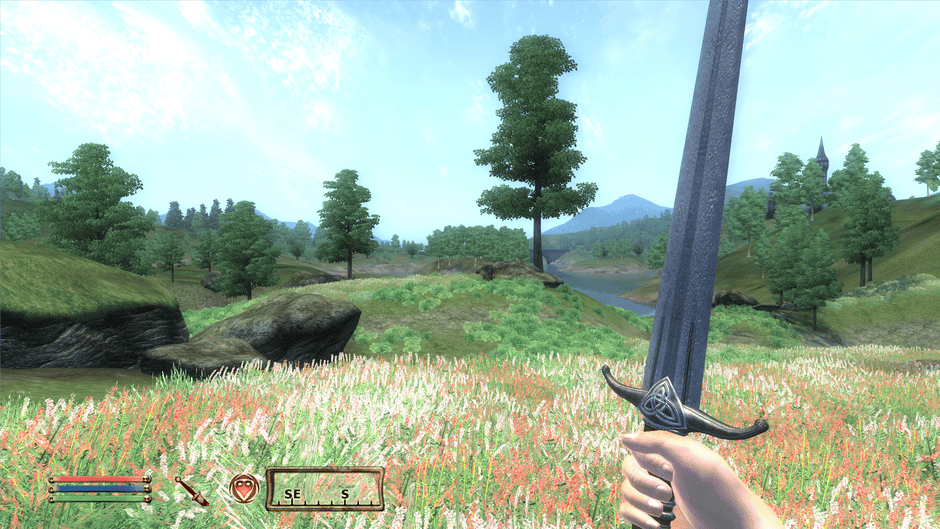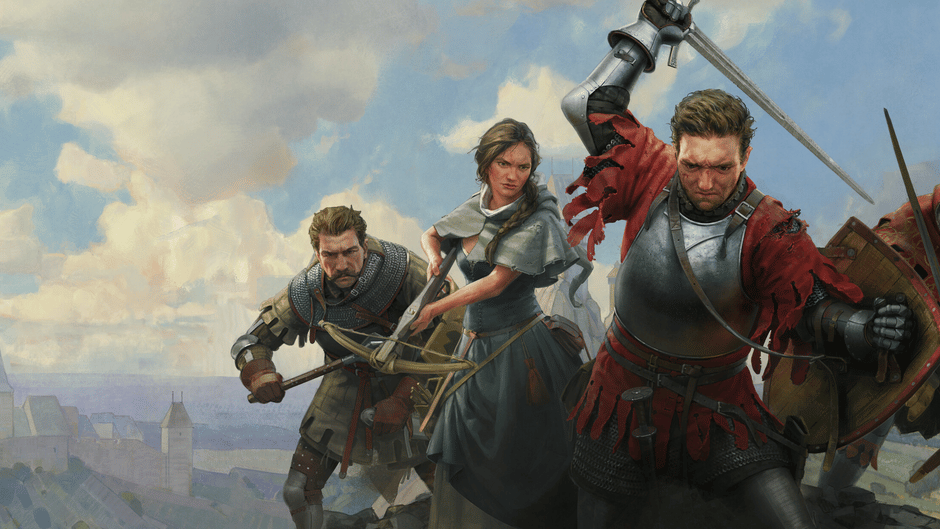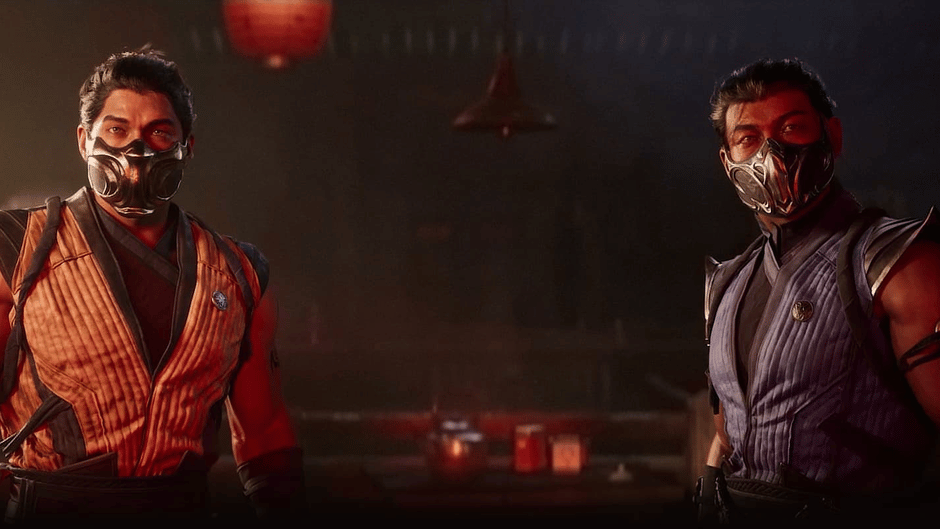The Elder Scrolls: Oblivion: The Forgotten Middle Child of RPG Greatness
In the pantheon of role-playing games, The Elder Scrolls IV: Oblivion often finds itself overshadowed by its predecessor, Morrowind, and its successor, Skyrim. Yet, this 2006 release from Bethesda Game Studios stands as a pivotal moment in the evolution of open-world RPGs.

In the pantheon of role-playing games, The Elder Scrolls IV: Oblivion often finds itself overshadowed by its predecessor, Morrowind, and its successor, Skyrim. Yet, this 2006 release from Bethesda Game Studios stands as a pivotal moment in the evolution of open-world RPGs. As we approach its 20th anniversary, it's time to revisit the impact and legacy of this groundbreaking title.
A World on the Brink of Chaos
Oblivion thrusts players into the heart of Tamriel during a time of crisis. The assassination of Emperor Uriel Septim VII sets in motion a chain of events that threatens to tear the fabric of reality apart. As gates to the hellish realm of Oblivion begin to open across the land, players must race against time to find the emperor's illegitimate heir and close the jaws of Oblivion before it's too late.
This premise sets the stage for an epic adventure that balances personal storytelling with world-shaking events. The main quest line is a roller coaster of political intrigue, demonic invasion, and heroic sacrifice that keeps players engaged from start to finish.
A Leap into a New Generation
Released for the Xbox 360 and PC, Oblivion represented a significant technological leap for the series. The game's graphics were a marvel for its time, with lush forests, sprawling cities, and detailed character models that pushed the hardware to its limits. The addition of full voice acting for every NPC, including performances by Patrick Stewart and Sean Bean, brought a new level of immersion to the world of Tamriel.
The game's visual and audio design created a sense of place that was unparalleled at the time. From the imperial grandeur of the White Gold Tower to the otherworldly landscapes of the Oblivion planes, every location was crafted with attention to detail that invited exploration and wonder.
Freedom to Forge Your Own Path
At its core, Oblivion is a game about freedom. After a brief tutorial section, players are let loose in the province of Cyrodiil with the ability to go anywhere and do anything. Want to ignore the main quest and become the head of the Thieves Guild? Go for it. Prefer to wander the wilderness collecting alchemical ingredients? The game won't stop you.
This open-ended approach to gameplay was revolutionary for its time and set the standard for future open-world RPGs. The game's numerous faction questlines, each with their own storylines and rewards, ensured that there was always something new to discover no matter how many hours you poured into the game.
A Living, Breathing World
One of Oblivion's most impressive features was its use of radiant AI to create a world that felt alive. NPCs had daily schedules, moving about the world, eating, sleeping, and interacting with each other in ways that made the world feel dynamic and responsive. This system, while not without its quirks, added a layer of depth to the game that was unprecedented at the time.
The result was a world that felt like it existed beyond the player's actions. Overhearing conversations between NPCs or stumbling upon unexpected events made Cyrodiil feel like a place with its own history and ongoing narratives, rather than just a backdrop for the player's adventures.
Combat and Magic: A Step Forward
Oblivion refined the combat system from its predecessor, making melee combat more engaging and visceral. The addition of ragdoll physics and more dynamic animations made every battle feel more impactful. The magic system, while simplified from Morrowind, offered a wide range of spells and the ability to create custom spells, allowing for creative problem-solving both in and out of combat.
The game's leveling system, which tied skill progression to character level, was controversial but encouraged players to think carefully about how they developed their characters. This system, combined with the game's level scaling, ensured that the challenge remained consistent throughout the game, though it sometimes led to unexpected difficulty spikes.
A Realm of Endless Adventure
Beyond the main quest, Oblivion offered a staggering amount of content. From the Dark Brotherhood's assassination contracts to the mind-bending quests of the Shivering Isles expansion, there was always another story to uncover or dungeon to explore. The game's quest design often went beyond simple fetch quests, offering unique scenarios and moral dilemmas that kept players invested in the world.
The addition of radiant quests and procedurally generated content meant that even after completing all the hand-crafted content, players could continue to find new adventures in the world of Cyrodiil. This approach to content creation would go on to influence many future RPGs and open-world games.
Modding: A Game Beyond the Game
Like other Bethesda titles, Oblivion found a second life through its vibrant modding community. The game's flexible engine allowed for everything from minor tweaks to total conversions, extending the life of the game far beyond its initial release. Mods addressing common criticisms, such as the leveling system or the infamously awkward character models, became essential parts of many players' experiences.
The modding scene also gave rise to entirely new quests, lands to explore, and gameplay systems, some of which rivaled or surpassed the quality of the base game. This community-driven content creation helped cement Oblivion's place as a beloved classic long after its initial release.
The Legacy of Oblivion
While Skyrim may have overshadowed it in terms of popular recognition, Oblivion's influence on the RPG genre cannot be overstated. Its approach to open-world design, quest structure, and player freedom set the template that many games would follow in the years to come. Features like fast travel, quest markers, and radiant AI became standard in open-world games, streamlining the experience for players while maintaining depth and complexity.
Oblivion also represented a crucial bridge between the more hardcore RPG elements of Morrowind and the more accessible design of Skyrim. It struck a balance between depth and accessibility that many fans consider the sweet spot of the series, offering complex systems for those who wanted to engage with them while remaining approachable for newcomers.
A Flawed Gem
Despite its many innovations, Oblivion was not without its flaws. The level scaling system, while intended to provide a consistent challenge, often led to a feeling of diminishing returns as players leveled up. The much-memed "Oblivion face" character models and sometimes stilted voice acting could break immersion. And the closure of Oblivion gates, while initially exciting, could become repetitive over the course of the game.
Yet, these flaws often endeared the game to players, becoming part of its charm. The sometimes wonky physics and AI led to memorable moments of unintentional comedy that players still fondly recall years later. In many ways, these imperfections made Oblivion feel more human and relatable than its more polished successors.
Conclusion: A Classic Worth Revisiting
As we look back on The Elder Scrolls IV: Oblivion, it's clear that it deserves recognition as more than just the middle child between Morrowind and Skyrim. It was a groundbreaking title that pushed the boundaries of what was possible in open-world RPGs, offering a level of freedom and immersion that was unparalleled at the time.
For those who have never experienced it, or for veterans looking to relive the magic, Oblivion remains a game worth playing. Its world, filled with wonder, danger, and endless possibilities, continues to captivate nearly two decades after its release. As we eagerly await the next installment in The Elder Scrolls series, perhaps it's time to return to the realm of Cyrodiil and close shut the jaws of Oblivion once more.





